Chrysler 2008 Annual Report Download - page 23
Download and view the complete annual report
Please find page 23 of the 2008 Chrysler annual report below. You can navigate through the pages in the report by either clicking on the pages listed below, or by using the keyword search tool below to find specific information within the annual report.-
 1
1 -
 2
2 -
 3
3 -
 4
4 -
 5
5 -
 6
6 -
 7
7 -
 8
8 -
 9
9 -
 10
10 -
 11
11 -
 12
12 -
 13
13 -
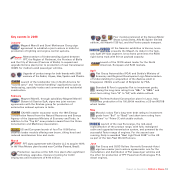 14
14 -
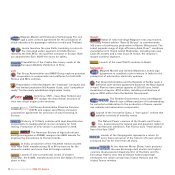 15
15 -
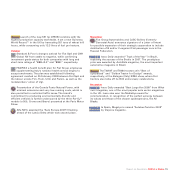 16
16 -
 17
17 -
 18
18 -
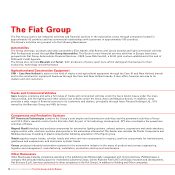 19
19 -
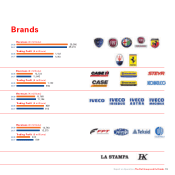 20
20 -
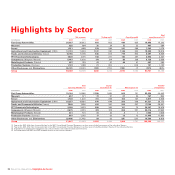 21
21 -
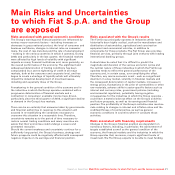 22
22 -
 23
23 -
 24
24 -
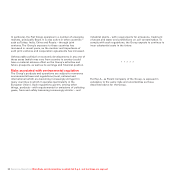 25
25 -
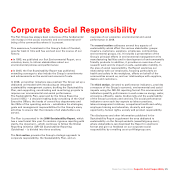 26
26 -
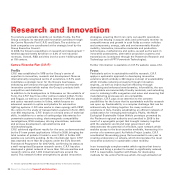 27
27 -
 28
28 -
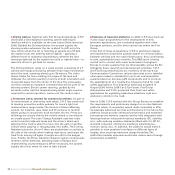 29
29 -
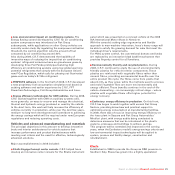 30
30 -
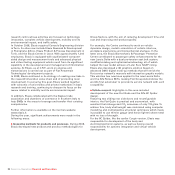 31
31 -
 32
32 -
 33
33 -
 34
34 -
 35
35 -
 36
36 -
 37
37 -
 38
38 -
 39
39 -
 40
40 -
 41
41 -
 42
42 -
 43
43 -
 44
44 -
 45
45 -
 46
46 -
 47
47 -
 48
48 -
 49
49 -
 50
50 -
 51
51 -
 52
52 -
 53
53 -
 54
54 -
 55
55 -
 56
56 -
 57
57 -
 58
58 -
 59
59 -
 60
60 -
 61
61 -
 62
62 -
 63
63 -
 64
64 -
 65
65 -
 66
66 -
 67
67 -
 68
68 -
 69
69 -
 70
70 -
 71
71 -
 72
72 -
 73
73 -
 74
74 -
 75
75 -
 76
76 -
 77
77 -
 78
78 -
 79
79 -
 80
80 -
 81
81 -
 82
82 -
 83
83 -
 84
84 -
 85
85 -
 86
86 -
 87
87 -
 88
88 -
 89
89 -
 90
90 -
 91
91 -
 92
92 -
 93
93 -
 94
94 -
 95
95 -
 96
96 -
 97
97 -
 98
98 -
 99
99 -
 100
100 -
 101
101 -
 102
102 -
 103
103 -
 104
104 -
 105
105 -
 106
106 -
 107
107 -
 108
108 -
 109
109 -
 110
110 -
 111
111 -
 112
112 -
 113
113 -
 114
114 -
 115
115 -
 116
116 -
 117
117 -
 118
118 -
 119
119 -
 120
120 -
 121
121 -
 122
122 -
 123
123 -
 124
124 -
 125
125 -
 126
126 -
 127
127 -
 128
128 -
 129
129 -
 130
130 -
 131
131 -
 132
132 -
 133
133 -
 134
134 -
 135
135 -
 136
136 -
 137
137 -
 138
138 -
 139
139 -
 140
140 -
 141
141 -
 142
142 -
 143
143 -
 144
144 -
 145
145 -
 146
146 -
 147
147 -
 148
148 -
 149
149 -
 150
150 -
 151
151 -
 152
152 -
 153
153 -
 154
154 -
 155
155 -
 156
156 -
 157
157 -
 158
158 -
 159
159 -
 160
160 -
 161
161 -
 162
162 -
 163
163 -
 164
164 -
 165
165 -
 166
166 -
 167
167 -
 168
168 -
 169
169 -
 170
170 -
 171
171 -
 172
172 -
 173
173 -
 174
174 -
 175
175 -
 176
176 -
 177
177 -
 178
178 -
 179
179 -
 180
180 -
 181
181 -
 182
182 -
 183
183 -
 184
184 -
 185
185 -
 186
186 -
 187
187 -
 188
188 -
 189
189 -
 190
190 -
 191
191 -
 192
192 -
 193
193 -
 194
194 -
 195
195 -
 196
196 -
 197
197 -
 198
198 -
 199
199 -
 200
200 -
 201
201 -
 202
202 -
 203
203 -
 204
204 -
 205
205 -
 206
206 -
 207
207 -
 208
208 -
 209
209 -
 210
210 -
 211
211 -
 212
212 -
 213
213 -
 214
214 -
 215
215 -
 216
216 -
 217
217 -
 218
218 -
 219
219 -
 220
220 -
 221
221 -
 222
222 -
 223
223 -
 224
224 -
 225
225 -
 226
226 -
 227
227 -
 228
228 -
 229
229 -
 230
230 -
 231
231 -
 232
232 -
 233
233 -
 234
234 -
 235
235 -
 236
236 -
 237
237 -
 238
238 -
 239
239 -
 240
240 -
 241
241 -
 242
242 -
 243
243 -
 244
244 -
 245
245 -
 246
246 -
 247
247 -
 248
248 -
 249
249 -
 250
250 -
 251
251 -
 252
252 -
 253
253 -
 254
254 -
 255
255 -
 256
256 -
 257
257 -
 258
258 -
 259
259 -
 260
260 -
 261
261 -
 262
262 -
 263
263 -
 264
264 -
 265
265 -
 266
266 -
 267
267 -
 268
268 -
 269
269 -
 270
270 -
 271
271 -
 272
272 -
 273
273 -
 274
274 -
 275
275 -
 276
276 -
 277
277 -
 278
278 -
 279
279 -
 280
280 -
 281
281 -
 282
282 -
 283
283 -
 284
284 -
 285
285 -
 286
286 -
 287
287 -
 288
288 -
 289
289 -
 290
290 -
 291
291 -
 292
292 -
 293
293 -
 294
294 -
 295
295 -
 296
296 -
 297
297 -
 298
298 -
 299
299 -
 300
300 -
 301
301 -
 302
302 -
 303
303 -
 304
304 -
 305
305 -
 306
306 -
 307
307 -
 308
308 -
 309
309 -
 310
310 -
 311
311 -
 312
312 -
 313
313 -
 314
314 -
 315
315 -
 316
316 -
 317
317 -
 318
318 -
 319
319 -
 320
320 -
 321
321 -
 322
322 -
 323
323 -
 324
324 -
 325
325 -
 326
326 -
 327
327 -
 328
328 -
 329
329 -
 330
330 -
 331
331 -
 332
332 -
 333
333 -
 334
334 -
 335
335 -
 336
336 -
 337
337 -
 338
338 -
 339
339 -
 340
340 -
 341
341 -
 342
342 -
 343
343 -
 344
344 -
 345
345 -
 346
346 -
 347
347 -
 348
348 -
 349
349 -
 350
350 -
 351
351 -
 352
352 -
 353
353 -
 354
354 -
 355
355 -
 356
356
 |
 |
requirements related to debt maturity and planned investments
with cash flow from operations, liquidity on hand, renewal or
refinancing of existing bank loans and/or facilities and possible
recourse to capital markets.
Even under current circumstances, the Group expects to
maintain adequate capacity to generate cash from its operating
activities. Actions taken to reduce production volumes should
enable a return to inventory levels compatible with current
sales volumes and to reverse, at least partially, the working
capital absorption experienced in the second half of 2008.
Nevertheless, a further significant and unexpected drop off in
volumes could have a negative impact on cash-generating
capacity from operating activities.
It is the Group’s policy to maintain liquidity in demand or
short-term deposits and readily negotiable money market
instruments, splitting such investments over an appropriate
number of counterparties, primarily banking institutions, with
the principal purpose of having investments which are suitably
liquid. Counterparties are selected according to their
creditworthiness, reliability and the quality of service provided.
However, in consideration of the current financial crisis,
conditions in the bank or money markets which might
negatively affect normal financial transactions cannot be
excluded.
Finally, although the Group has the continued support of bank
counterparties and the financial markets for the refinancing of
its debt, it could have a requirement for additional funding in
unfavourable market conditions, with limited availability of
certain sources of financing and an increase in the related costs.
Risks associated with the Group’s credit ratings
The ability to access the capital markets or other forms of
financing and the related costs are dependent, amongst other
things, on the Group’s credit ratings. Fiat is currently rated
investment grade with a Baa3 “Under Review for Possible
Downgrade” from Moody’s Investors Service, BBB- with Rating
Watch Negative from Fitch Ratings and BBB- with CreditWatch
Negative from Standard & Poor’s Rating Services. Any
downgrade by the rating agencies could limit the Group’s
ability to access the capital markets and increase its cost of
capital, having an adverse effect on the Group’s earnings and
financial position.
Risks associated with fluctuations in currency
and interest rates
The Fiat Group, which operates in various markets worldwide,
is naturally exposed to market risks stemming from
fluctuations in currency and interest rates. Its exposure to
currency risk is mainly connected to the geographic
distribution of its manufacturing and sales activities, which
result in cash flows from its export activities being
denominated in currencies different from those connected to
its production activities. In particular, the Group is mainly
exposed to net exports from the euro zone to other currency
areas (principally the U.S. dollar and the British pound) and to
exports from Poland to the euro zone.
The Fiat Group uses various forms of financing to cover the
borrowing requirements of its industrial activities and
financing offered to customers and dealers. Changes in interest
rates can increase or reduce the cost of financing or interest
margins of the financial services companies.
Consistent with its risk management policies, the Fiat Group
seeks to manage risks associated with fluctuations in currency
and interest rates through the use of financial hedging
instruments. Despite these hedging transactions, sudden
fluctuations in currency or interest rates could have an adverse
effect on the Group’s earnings and financial position.
Risks associated with the policy of targeted
industrial alliances
The Group has a policy of seeking opportunities for joint
ventures and industrial alliances in order to optimise its capital
commitments and reduce risk. There can be no assurance that
the Group will succeed in securing such opportunities or that
transactions entered into will be devoid of administrative,
technical, political or financial difficulties. Neither can there be
any assurance that such transactions will succeed in producing
the expected benefits.
Report on Operations Main Risks and Uncertainties to which Fiat S.p.A. and the Group are exposed22
